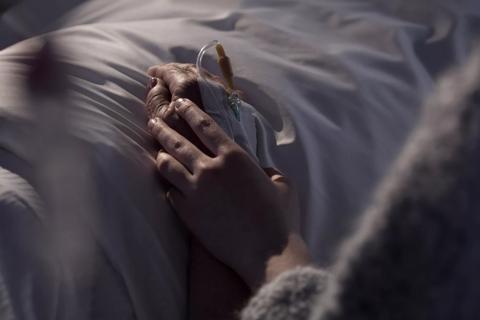How to create your own organizational system

If you or a loved one is dealing with cancer, you know all-too-well the ups and downs that come with battling this disease. Not to mention — there’s a ton of treatment information to gather and track. It’s easy to become overwhelmed. How can you figure out what information you really need and what questions to ask — and how do you organize it all?
Advertisement
Cleveland Clinic is a non-profit academic medical center. Advertising on our site helps support our mission. We do not endorse non-Cleveland Clinic products or services. Policy
Here’s a step-by-step plan to help you create a system for keeping your cancer information organized. Once you have your system in place, it’s amazing how much it helps dampen stress. “When patients and their loved ones have appointments, treatment information, personal information and doctor information readily available, it eliminates a major stress factor and allows the patient to focus on healing,” says Josette Snyder, RN, MSN, AOCN.
Will you take notes on paper? On a phone or on a tablet? Both?
Some people understand and retain information better when they are handwriting notes on paper and keeping them in notebooks and folders. Others might prefer technology because the information is harder to misplace. Smartphones and tablets have made it easier to keep track of appointments with calendar alerts.
“Many patients are still apt to use a mix of both electronic and paper,” says Snyder. “They want to cover all their bases and make sure no important information slips between the cracks.”
However you choose to record information will probably impact how you put the rest of your organizational system together.
Of all the information you’ve gathered so far, decide what you need to have most readily available (information you might need to take to your appointments), like:
Advertisement
On the other hand, ask yourself what information can you set aside as long as you can locate it easily if you need it?
To help with Step 2, break down the information into categories, and then decide how to handle each category.
Cancer treatment categories can include:
Below, find suggested lists of information that can fit into your cancer treatment categories and keep you organized:
Personal health information:
Schedules and contact information:
Insurance and billing information:
Legal documents:
You can also create a category for articles and research. This would include educational information about your diagnosis and treatment that you would like to keep.
Now that you can visualize the categories of information you will accumulate, you can start to develop an organizational scheme that fits your style.
You might separate binders per category and/or scan all documents and store them in a cloud-based storage application so you have them readily available anywhere at any time.
With all of the organizational tools (physical and digital) that are out there, it’s important to take some time to sort your cancer treatment information to avoid headaches and stress trying to find papers, notes, etc. “Taking this step will allow you to focus your energy on feeling better and beating cancer,” says Snyder.
Advertisement
Learn more about our editorial process.
Advertisement

Here’s how (and why) to ask your doctor about treatment goals, second opinions, clinical trials and more

Chemo cold caps may help you keep more of your hair during therapy

Practice meditation together, make a unique-to-them care package and embrace emotions

From a thoughtful note to a special pillow, these items are a win

Take these steps to limit the damage

The short answer from an exercise physiologist

New drugs are better at targeting cancer cells

The short answer from an oncologist

Babies can get congested easily, but you can calm their cough by keeping them hydrated, using nasal drops and running a humidifier

Weight loss may cause loose, sagging skin and muscle loss to your rear

Several conditions, like vitiligo and fungal infection, can cause a loss of pigmentation, leading to white spots or patches on your skin